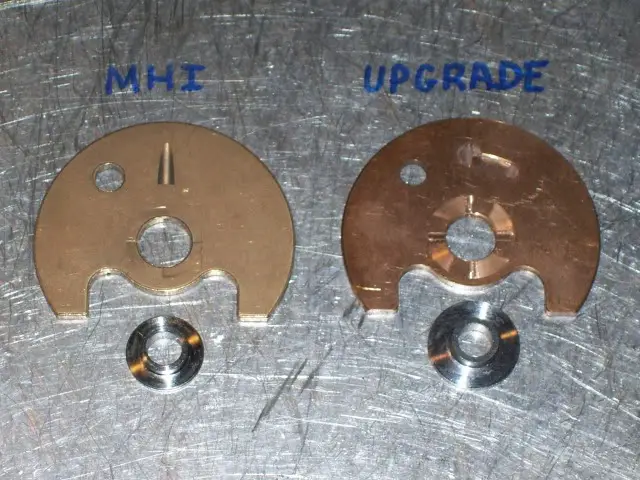Quoting prove_it:
It matters, this is the reason Justin on tuners won't warranty his rebuilds if you feed from the head. Oil pressure can vary too much from the head along with an insufficient oil volume. The stock thrust washer in the turbo is fine with head feeding, but the aftermarkets with the extra oil port require much more oil.
That why FP recommends only feeding from the OFH with a .075" restrictor on mitsu based center cartridges.
If you have a properly functioning oil system, you should have plenty of pressure and volume at the head. Hence, Mitsubishi installing a .075" restrictor inline to limit both on the factory cartridge. Sure, if you're running a FP black or some sh*t, you probably wouldn't want to feed it from the head. But any stock frame MHI turbo (even with the fancy super thrust washer) should be fine when fed from the head. MHI calls for 50 psi at about 1 liter/min as a general spec for their turbos. If you can't achieve this with a feed line from the head (restricted at that), you've got other issues to deal with.
Like I said, it doesn't matter where you're feeding the turbo from. What matters is the getting the proper pressure and flow according to your turbocharger's specifications. If you can achieve that from the head, then feed it from the head. If you need to feed it from the OFH, then do so. Either way, you'll want to check the pressure from whatever source you're using and verify it's where it should be. If it's not, you'll need to swap sources to gain more pressure/flow, or install a restrictor to limit them.












